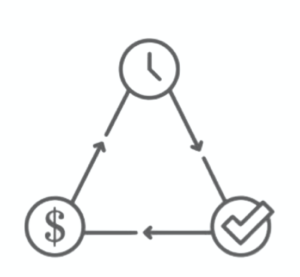Understanding Gross Margin in Hardware
COGS, cost, Dragon Innovation, Hardware, Hardware journey, Manufacturing, margin, product development, Proof of concept, Costing

Scott N. Miller
Published on May 26, 2016
Recently, Brad Feld published an insightful post on hardware gross margin. As a follow-up, I thought it would be useful to take a deeper dive into this critical topic because it's one of the core metrics that will determine whether you have a viable hardware business (i.e. you make money on every unit sold, and have enough left over to fuel your growth).
Let’s start by defining a few terms (some below, additional can be found here):
- Cost of Goods Sold (COGS): The sum of material cost, manufacturing overhead and labor costs of the product you’re selling (i.e. what you pay the factory for each unit). Often, the costs of transportation and warehousing are added, producing the total cost per unit of delivering a product to your customer.
- Net Sales Price: The price you sell the product to your customer, including any adjustments to include the effect of commissions, discounts, and allowances and for estimated returns. If you are selling Direct (e.g. through your website), this is the end customer. If you are selling through a Retail channel (e.g. Target), then this is the customer. As a side note, in the case of retail, you effectively have two different customers to satisfy.
- Retail Price: The price at which the Retailer sells your product to their customers.
- Gross Margin Percentage: (Net Sales Price - COGS) / (Net Sales Price), expressed as a percentage.
- Retail Margin Percentage: (Retail Price – Net Sales Price) / (Retail Price), expressed as a percentage.
As an example, say you are selling to a retailer for $50 and your COGS are $25. The retailer sells to the customer for $79.99. In this case, your GM Percentage is 50% and the Retailer Margin Percentage is 37%.
Why is gross margin as important a metric as revenue? Gross margin represents the amount of money you retain after manufacturing that can be put towards marketing, R&D and profit. To have $100MM in revenue only tells half of the story - you could be losing money with every product sold.
Typically, a consumer electronics company will need a Gross Margin Percentage greater than 50% to be healthy and drive profitability for two reasons:
- Gross margin describes the flow of funds from sales left over after the cost of manufacturing, distributing, and supporting the product has been paid for. From this, all of the other non-manufacturing expenses of the organization must be paid. As well, it is necessary to provide additional funds to invest in R&D, product development, and in inventory, to support a growing business. This last requirement is often overlooked by entrepreneurs who may not realize the magnitude of the funds required just to buy inventory for a growing business. Inventory usually must be paid for long before it is sold to and paid for by the customer.
- In general, a business with a gross margin of less than 50% will have difficulty financing its own growth and will instead need outside capital to invest in inventory, R&D, etc. Unfortunately, outside investors may be hesitant to provide this capital to a business with low margins. On the other hand, a business with a gross margin of 70% can finance itself quite well and grow rapidly due to an additional 20% of clear and uncommitted funds available to invest back into the business. Considering that a very well-run consumer electronics company might make 10% on the bottom line before taxes, the difference between 50% and 70% is huge in terms of the opportunities it brings.
Therefore, to maximize your GM, you have effectively two levers:
- Sell the product for more money to your customer
- Reduce your COGS
The sale price is largely determined by the market and you may have limited influence over it. In turn, it makes sense to focus on what you can influence: COGS (which is also directly related to manufacturing and one third the Manufacturing Triangle along with quality and schedule).
COGS is primarily driven by:
- Packout (i.e. what is included in the SKU)
- Design of the Product
- Packaging
- Labor Rate
- Factory Overhead and Margin
Setting a COGS target based on expected Net Sales Price and desired GM Percentage and then engineering to meet this goal should start at the earliest stages of your hardware journey. The decisions you make early will cast a long shadow and can be difficult and expensive to change later. The foundation for calculating your COGS is the Bill of Materials (BOM). To help get started on the right track, we recommend utilizing our Standard BOM (more information about why your BOM is so critical here). Another great resource is our Design for Manufacturing Series which specifically includes a deeper dive into costing.
Stay tuned - over the next few months, we’ll be releasing new software tools with a strong manufacturing point of view to further help companies manage their product journey.
Special thanks to Jon Elordi and Kathy Keeffe for their help on this post!
***
Comments or questions? Please let us know!
Related Posts
2 minute read
|
November 10, 2015
Introducing the Dragon Standard BOM
Read More
7 minute read
|
December 11, 2015
Can Your Product Marketing Videos Be the Key to Your Specification Document for Manufacturing?
Read More
3 minute read
|
April 12, 2019




